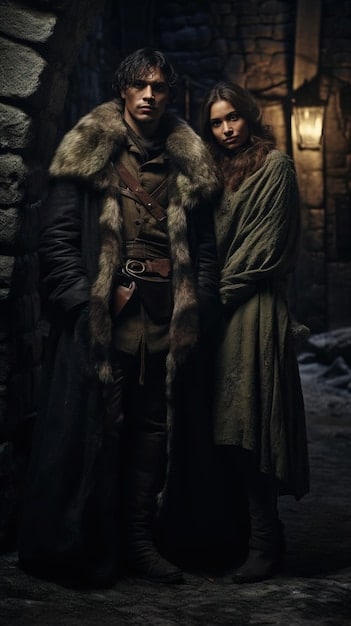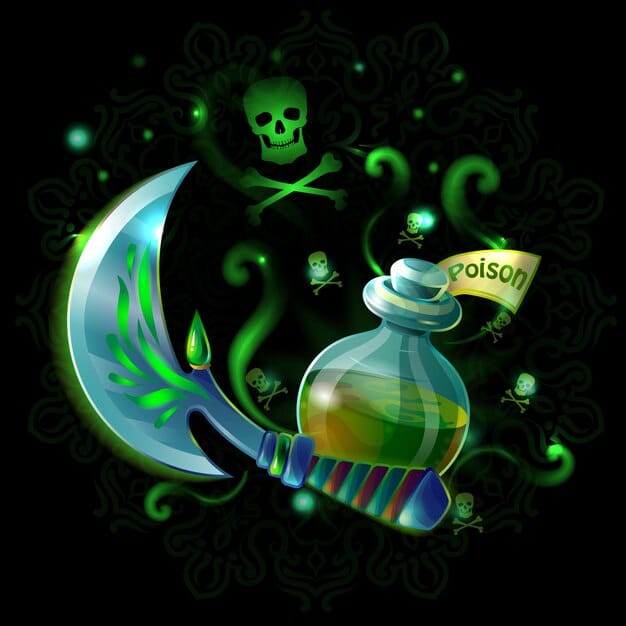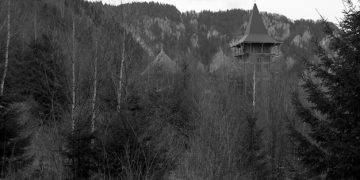The Witcher Schools: A Netflix Guide to Witchers and Lore

Netflix’s ‘The Witcher’ introduces viewers to a world populated by monster hunters from different schools, each with unique training and philosophies; this guide explores these witcher schools and their distinct characteristics.
Netflix’s adaptation of ‘The Witcher’ brings to life the fascinating world of monster hunters, each trained in different schools with unique methods. This guide will navigate you through the various witcher schools and their specialties. Get ready to delve into the lore!
Understanding the World of Witchers in Netflix’s Adaptation
The world of ‘The Witcher’, brought to life by Netflix, is brimming with lore and intricate details, especially concerning the witchers themselves. These monster hunters are not a monolithic group; rather, they are products of different schools, each with its own training methods, philosophies, and specialties. Understanding these distinctions is key to appreciating the depth of the series.
Netflix’s adaptation does a commendable job of introducing these concepts, but the nuances can be easily missed. This guide aims to clarify the differences between the witcher schools, providing a comprehensive overview for both newcomers and seasoned fans.
The Role of Witchers in the Continent
Witchers are monster hunters who possess superhuman abilities due to rigorous training and alchemical mutations. They are often viewed with suspicion and distrust by the general populace, despite their vital role in protecting humanity from dangerous creatures.
- Monster Hunters: Witchers are primarily hired to hunt and eliminate monsters that threaten human settlements.
- Mutations: Through a process known as the Trial of the Grasses, witchers undergo mutations that enhance their strength, speed, senses, and resilience.
- Stigma: Despite their services, witchers are often ostracized due to their mutations and perceived lack of emotions.

Ultimately, witchers play a crucial role in maintaining balance in a world teeming with dangers, even if they are not always appreciated for it.
Kaer Morhen: The Keep of the School of the Wolf
Kaer Morhen, nestled in the mountains, serves as the stronghold and training ground for the School of the Wolf, the school to which Geralt of Rivia belongs. This school is renowned for its balanced approach to combat and its emphasis on knowledge and tradition.
The School of the Wolf is deeply rooted in history and has produced some of the most notable witchers in the Continent. Its traditions and values shape the witchers who emerge from its halls, instilling in them a sense of duty and resilience.
Training and Philosophy
The training at Kaer Morhen is rigorous, focusing on swordsmanship, alchemy, monster lore, and the application of Signs, magical abilities used by witchers. The philosophy emphasizes adaptability and a deep understanding of the monsters they hunt.
Witchers of the School of the Wolf are known for their versatility in combat, able to effectively use both steel and silver swords, as well as employing Signs to gain an advantage in battle. They are also well-versed in the use of potions and oils to enhance their abilities and exploit monster weaknesses.
Famous Witchers from the School of the Wolf
Geralt of Rivia is the most famous graduate of the School of the Wolf, known for his exceptional skills and adherence to the Witcher Code. Other notable witchers include Vesemir, Geralt’s mentor, and Eskel and Lambert, fellow witchers who trained alongside Geralt at Kaer Morhen.
The School of the Wolf’s legacy is one of skill, knowledge, and unwavering dedication to the protection of humanity. Its witchers stand as a beacon of hope in a world filled with darkness.
The School of the Viper: Poisons and Deceit
The School of the Viper, located in the kingdom of Nilfgaard, is known for its use of poisons and its more morally ambiguous approach to the witcher profession. Its witchers are often seen as ruthless and willing to do whatever it takes to get the job done.
The School of the Viper operates under a different set of principles than the School of the Wolf. While both schools train their witchers rigorously, the focus and methods differ significantly, resulting in witchers with distinct characteristics and reputations.
Training and Philosophy
The training at the School of the Viper emphasizes stealth, agility, and the use of poisons. Viper witchers are adept at using toxins to weaken their opponents or gain an advantage in combat. They are also known for their cunning and willingness to employ deception.
- Poison Mastery: Viper witchers are experts in the creation and application of poisons, using them to enhance their weapons and debilitate their enemies.
- Stealth and Agility: Their training focuses on stealth and agility, allowing them to move silently and strike quickly.
- Moral Ambiguity: The School of the Viper is less concerned with adhering to a strict code of conduct, leading to its witchers being viewed as more ruthless.

The reputation of Viper witchers is often tarnished by their willingness to cross moral boundaries, but their effectiveness in combating monsters cannot be denied.
The School of the Bear: Strength and Resilience
The School of the Bear, often overlooked, hails from a region that values brute strength and resilience. Unlike other schools, the School of the Bear values a straightforward approach to monster hunting.
These witchers are characterized by their raw power and ability to withstand immense physical stress, the school’s philosophy focusing more on direct confrontation rather than the strategic cunning that other schools may prefer.
Distinctive Attributes
What separates the School of the Bear from the others is its emphasis on strength and endurance, often sacrificing speed and agility for sheer power. Their armor is typically heavier, reflecting their preference for withstanding attacks rather than avoiding them.
Bear School witchers also tend to be more independent and less concerned with the politics of the witcher world, often operating as solitary hunters. This independence has led to less documentation about them compared to the more prominent schools.
Combat Preference
In combat, a Bear School witcher relies on heavy blows and enduring attacks, often engaging monsters head-on rather than using potions or signs extensively. This makes them formidable in close-quarters combat, able to outlast many opponents.
While their methods may seem less refined than those of the Wolf or Viper schools, the School of the Bear has produced some of the most physically powerful witchers, capable of taking down the toughest monsters through raw force and resilience.
The School of the Cat: Experimentation and Instability
The School of the Cat is one of the most controversial and ethically questionable witcher schools. Its history is marked by experimentation, leading to enhanced physical abilities but also severe psychological instability in its witchers.
Located in a mobile training facility, the School of the Cat travels from place to place, accepting orphans and abandoned children for training. The methods they employ, however, are far from humane, often pushing the trainees to their limits and beyond.
Altered States
The mutations performed by the School of the Cat are more extensive and intrusive than those of other schools. These alterations result in witchers who possess heightened senses, reflexes, and agility, but also a tendency towards emotional detachment and unpredictable behavior.
Cat School witchers are also known for their proficiency with dual blades, a fighting style that emphasizes speed and precision. However, their instability often makes them unreliable and dangerous, leading to their widespread distrust.
Moral Implications
The School of the Cat’s disregard for ethical boundaries has led to many of its witchers becoming mercenaries or even assassins. Their willingness to take on any contract, regardless of the target, has further damaged their reputation and made them outcasts among witchers.
Despite their effectiveness in combat, the School of the Cat’s unethical practices and the instability of its witchers make it a cautionary tale within the witcher community.
Other Witcher Schools and Their Significance
While the School of the Wolf, Viper, Bear, and Cat are the most well-known, other witcher schools existed, each with its own history and contributions to the witcher profession. Although less prominent, these schools add depth to the lore of ‘The Witcher’ and demonstrate the diversity within the witcher community.
Understanding these lesser-known schools provides a more complete picture of the witcher world and its complexities.
The School of the Griffin
The School of the Griffin, located in Kovir and Poviss, focused on combining witcher training with knightly virtues. Griffin witchers were known for their honor, integrity, and dedication to protecting the innocent.
They emphasized the use of Signs and tactical approaches to combat, often acting as protectors of small villages and settlements. However, the school eventually fell into decline due to political conflicts and the dwindling number of monsters.
The School of the Crane
Little is known about the School of the Crane, but it is rumored to have been located in the eastern regions of the Continent. Some believe that Crane witchers specialized in aerial combat and used unique weapons and techniques.
Due to the lack of information, the School of the Crane remains shrouded in mystery, with many of its secrets lost to time.
The School of the Manticore
The School of the Manticore is another school, known for its expertise in alchemy and the creation of complex potions and elixirs. Manticore witchers were skilled at using alchemical concoctions to enhance their abilities and exploit monster weaknesses.
Their knowledge of alchemy made them valuable allies, but their focus on research and experimentation often led them to be seen as eccentric and isolated.
| Key Point | Brief Description |
|---|---|
| 🐺 Witcher Schools | Each school has unique training and philosophies. |
| 🧪 Mutations | Enhance strength, speed, and senses in witchers. |
| ⚔️ Combat Styles | Differ based on the school (e.g., swords, poisons). |
| 🛡️ Kaer Morhen | Home to the School of the Wolf and Geralt’s upbringing. |
Frequently Asked Questions
▼
The primary witcher schools include the School of the Wolf (Geralt’s school), the School of the Viper, the School of the Bear, and the School of the Cat, each with distinct training methods and philosophies.
▼
Witcher schools differ in their training methods, combat styles, mutations, and philosophies. For example, the School of the Viper emphasizes poisons, while the School of the Bear focuses on strength and resilience.
▼
Geralt of Rivia belongs to the School of the Wolf, which is known for its balanced approach to combat, its emphasis on knowledge and tradition, and its rigorous training program.
▼
Kaer Morhen is the keep and training ground for the School of the Wolf. It serves as a place of learning, camaraderie, and shared history for witchers of the Wolf School.
▼
No, not all witcher schools are equally respected. Some, like the School of the Cat, are viewed with suspicion and distrust due to their unethical practices and the instability of their witchers.
Conclusion
Exploring the different witcher schools in ‘The Witcher’ reveals the depth and complexity of this fantastical world. Each school offers a unique perspective on monster hunting, training methods, and the role of witchers in society. From the honorable School of the Wolf to the morally ambiguous School of the Viper, these distinctions enrich the narrative and provide a deeper understanding of the characters and their motivations. As you continue your journey through Netflix’s adaptation, keep these differences in mind to fully appreciate the nuances of the witcher world.





